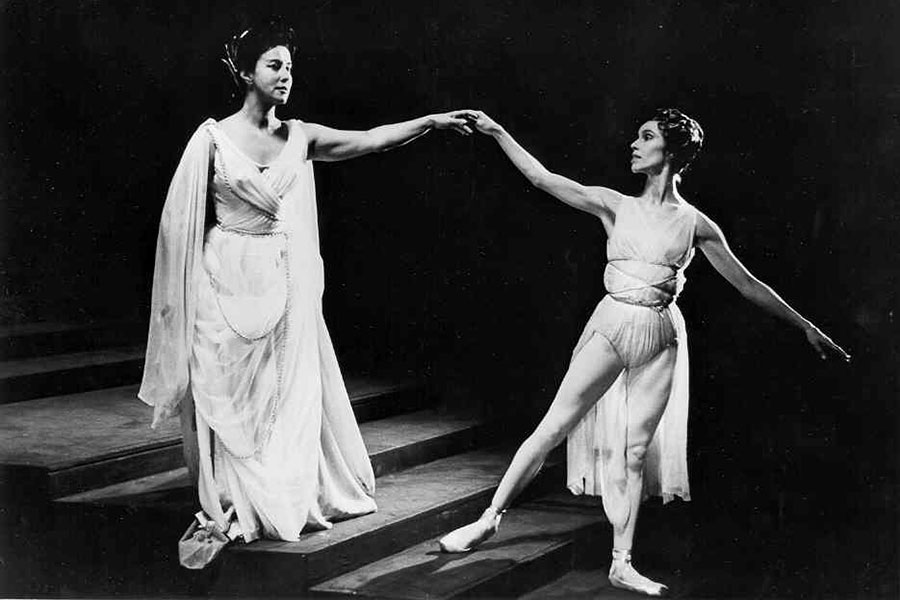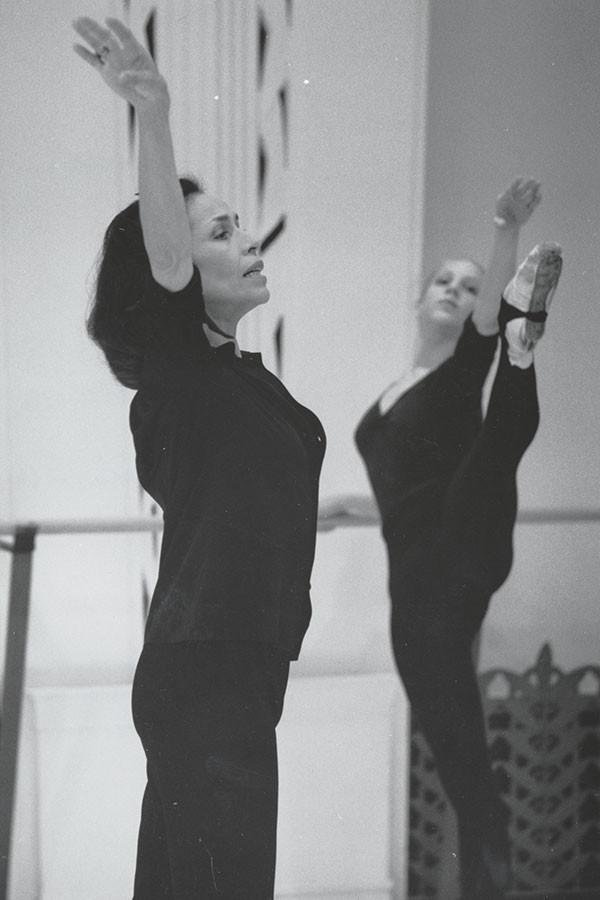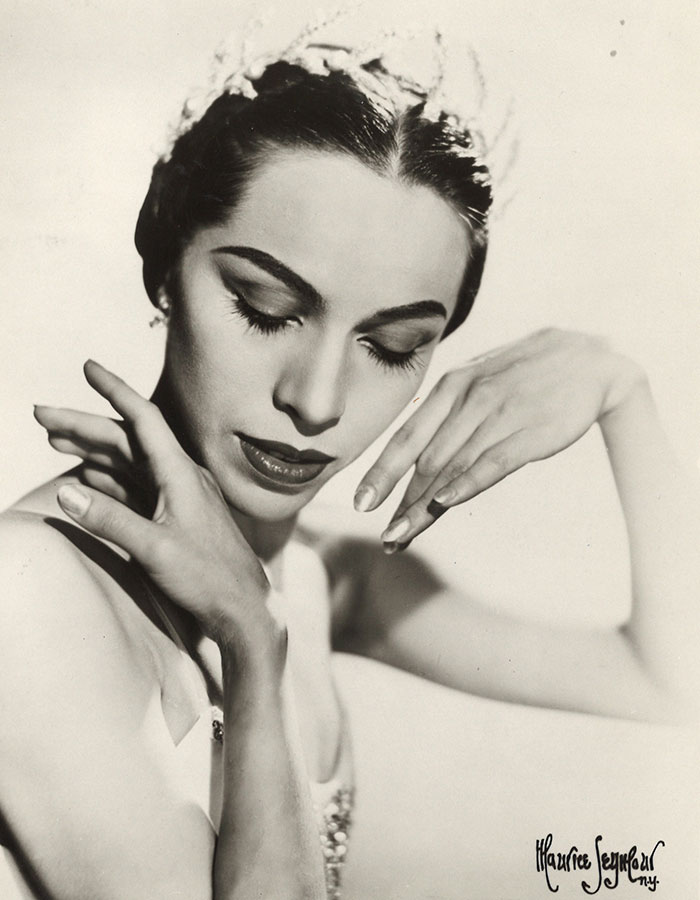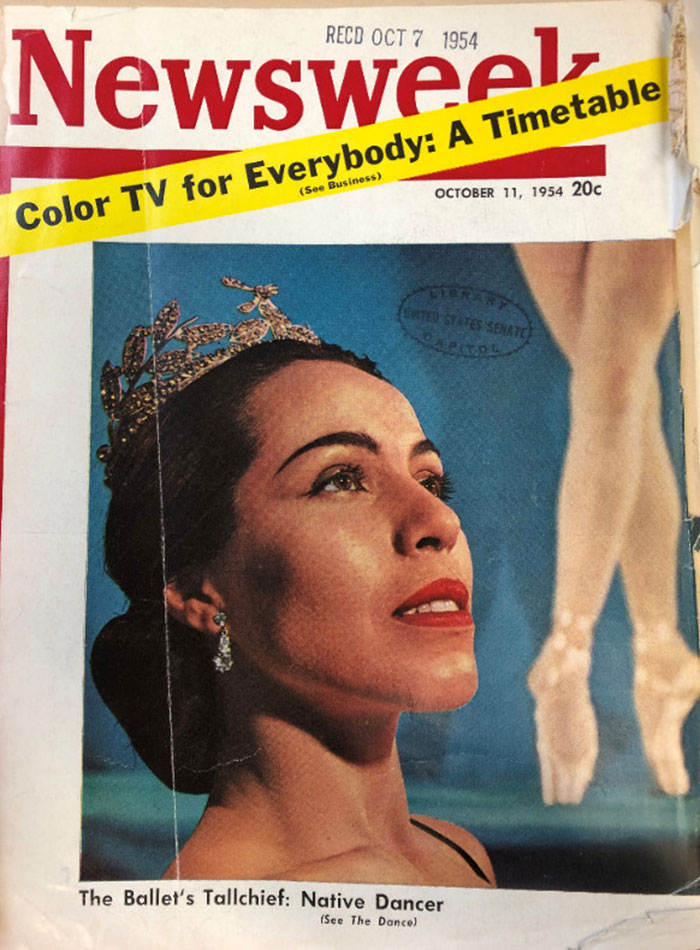November 06, 2023
En pointe in Chicago: Maria Tallchief's Lyric legacy
Maria Tallchief (1925-2013) is often described as America's first true prima ballerina. Certainly she played that role at Lyric Opera of Chicago; not only did she grace our productions with her legendary talent as a ballerina, but she also created a balletic tradition which continues here today.
During Lyric's first decade of existence, Maria Tallchief was seen at Lyric as prima ballerina in two company premieres: Ponchielli's La Gioconda (1957) and Gluck's Orfeo ed Euridice (1962). In 1971, she was appointed ballet director at Lyric, a position she held for two decades. In 1974 she founded Chicago City Ballet, which became the resident ballet company for Lyric, and an important independent dance organization for much of the 1980s.

Maria Tallchief with soprano Lisa Della Casa (Euridice) in Lyric's 1962 production of Gluck's Orfeo ed Euridice.
For the entire Lyric family, Maria Tallchief represented the absolute best in ballet. She was a longtime member of our Women's Board, and for many years her presence was anticipated at every opening-night Opera Ball. On those occasions, she prepared the principal artists for the Grand March with the same precision with which she would have prepared for a Balanchine premiere.
She received numerous accolades and honors, including induction into the National Women’s Hall of Fame, the National Medal of Arts, and posthumous recognition in the National Native American Hall of Fame. And for Lyric, she was quite simply the force that brought dance to our stage.

Maria Tallchief teaching in Chicago
Born Elizabeth "Betty" Marie Tall Chief in Fairfax, Oklahoma, Maria was raised on the Osage Nation reservation. Her Osage name was Ki He Kah Stah Tsa, and her father came from two influential families, the Tall Chiefs and the Big Hearts.
Her mother's lifelong devotion to the arts lead Maria to begin piano and ballet lessons as a three year old. In 1933, the family relocated to Los Angeles in search of better dance opportunities for Maria and her younger sister, Marjorie. There, she studied different styles of dance and acrobatics before joining Bronislava Nijinska's studio at the age of 12. Sister of renowned Russian dancer and choreographer Vaslav Nijinsky, Nijinska had a profound impact on dance as both an artist and teacher — particularly in the career of Maria Tallchief. At 15, Maria made her debut at the Hollywood Bowl, dancing a lead part in Nijinska's "Chopin Concerto."
From your first plié you are learning to become an artist. In every sense of the word you are poetry in motion. And if you are fortunate enough...you are actually the music.
After graduating from Beverly Hills High School, Maria moved to New York City at 17 to pursue a career in dance. Chaperoned by family friend and fellow ballerina Tatiana Riabouchinska, she was soon taken on as an apprentice by the Ballet Russe de Monte Carlo. She would spend the next five years performing with the troupe, working her way up to featured soloist. It was during this time that she met the legendary choreographer George Balanchine — marking a turning point in both of their careers.
Balanchine continued to cast Tallchief in important roles with the Ballet Russe. As their professional relationship developed, so did their friendship. The two married in 1946, when Maria was 21 and Balanchine was 42. When her contract with the Ballet Russe expired in 1947, she followed Balanchine to the Paris Opera Ballet where he was guest choreographer. While her fellow dancers looked down upon her American roots, she was beloved by French audiences and the press. During those months, she became the first American to perform with the Paris Opera Ballet.

A glamourous Maria at the height of her career in New York City.
Returning to New York, Maria joined the newly founded New York City Ballet, where she made history as the world's first American prima ballerina. With her extraordinary technique and blazing energy, she set performance standards at NYCB in the Balanchine repertoire that confirmed her stature as one of the greatest dancers of the twentieth century. He created many roles specifically for Maria, including the lead in "The Firebird," and the Sugar Plum Fairy in "The Nutcracker" — turning a relatively obscure ballet into a box office success and a tradition which continues today. While their marriage was annulled in 1951, the couple continued to work and dance together for many years.
In 1954, Maria's career reached new heights when she appeared on the cover of the October 11, 1954 issue of Newsweek. The magazine proclaimed her the highest paid ballerina in the world, with a salary of $2,000 a week, which the Ballet Russe had used to lure her away from the New York City Ballet.

Maria Tallchief on the October 11, 1954 cover of Newsweek Magazine.
Throughout the 1950s and 60s, Maria was seen on all the major stages around the world. In 1956 she married Chicago businessman Henry D. "Buzz" Paschen, Jr., and eventually family considerations brought her to Chicago and Lyric.
In celebration of her enduring impact on American ballet, Maria was inducted into the National Women's Hall of Fame in 1996, received the NEA's National Medal of Arts in 1999, and was posthumously inducted into the National Native American Hall of Fame in 2018.
As part of the U.S. Mint's American Women Quarters Program, Maria Tallchief is being honored with a 2023 quarter. It includes her name in both English and Osage script alongside a likeness of a dancing Maria. Throughout her career, Maria never gave in to the pressure to appear more "European" by changing her name (as was common practice for the time). Proud of her Osage heritage, she was honored by the Osage Tribal Council with a name selected by her grandmother, "Wa-Txthe-thonba," which translates to "Two Standards" — showcasing the duel identities she embodied throughout her life. As a dancer, choreographer, and later teacher, she frequently spoke out against injustices and discrimination, using her status and stardom to break barriers for other Native American dancers — a legacy that is still felt to this day.
Dance from your heart and love your music, the audience will love you in return.
